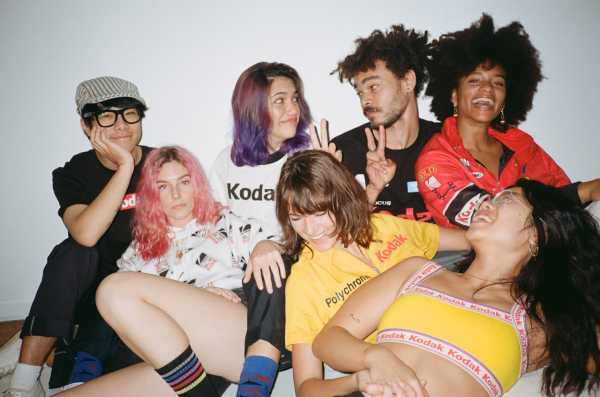
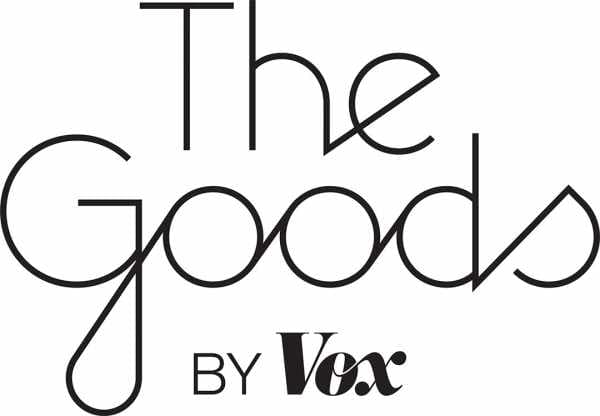
Kodak announced Thursday that it will partner with fast-fashion retailer Forever 21 for a 26-piece collection — T-shirts, crop tops, jackets, loungewear, polos, and sweatshirts.
The clothes are emblazoned with Kodak logos and color schemes from the ’90s. Specifically, design elements from the company’s old NASCAR team, making them simultaneously a callback to a time when Kodak was wealthy and beloved, and a tie-in to a moment where streetwear-chasing kids are heavily into logos. (They already love NASCAR.)
It’s a big play for youth culture by the storied film brand, which declared bankruptcy in 2012, and it can tell us a lot about the way the analog renaissance is being capitalized on by huge — and sometimes floundering — tech companies.
Kodak wants to be a cool youth brand, following the path set by Fujifilm and Polaroid
Best known for photography, Kodak has been an industrial printer company since the fall of film. The vast majority of the company’s revenue comes from making newspapers, custom labels, and other things that need to be printed at scale with a high level of detail. It’s keeping the business alive, but it’s not cool.
If Kodak is going to stage a comeback in consumers’ hearts, it needs the teens.
“I have this ambition to return Kodak to being one of the world’s best-known, best-loved brands,” Dany Atkins, Kodak’s chief branding officer, said. Atkins was poached from Apple’s Beats by Dre three years ago, and her first order of business was to point out that, uh, Kodak needed to have an Instagram account.
Kodak may have been the most recognizable photography brand in the world in the ’90s, but among the kids it’s chasing, now it’s easily a distant third. Urban Outfitters has stocked Fujifilm’s instant-printing Instax camera in its brick-and-mortar stores and on its website for years, offering dozens of photo frames and photo albums and photo-related accessories that are specifically designed for the size and shape of the Instax print-outs.
Polaroid leveraged the rise of nostalgia-inspired Instagram filters and online fervor for analog culture into “The Impossible Project,” a much-hyped and crowd-driven campaign that lasted years and culminated in the release of an “adorable” instant camera — almost exactly 10 years after the company had stopped making film. Both rode an analog wave that also lifted sales of record players, handicrafts, longhand writing, and books.
“I have this ambition to return Kodak to being one of the world’s best-known, best-loved brands”
So, Kodak needs Forever 21 the way a saltine needs literally any topping, but none of this should be too hard. They’re just copying an already codified playbook.
Atkins has spearheaded a series of fashion collaborations, starting with a pure hypebeast play in August 2015 — a Carol Lim-designed Opening Ceremony capsule collection (a $145 long-sleeve tee and a $195 crewneck sweater) inspired by the work of director Spike Jonze. Lim designed more T-shirts that fall, considered a success not just because they sold out but also because Joe Jonas wore one for a day out in Beverly Hills.
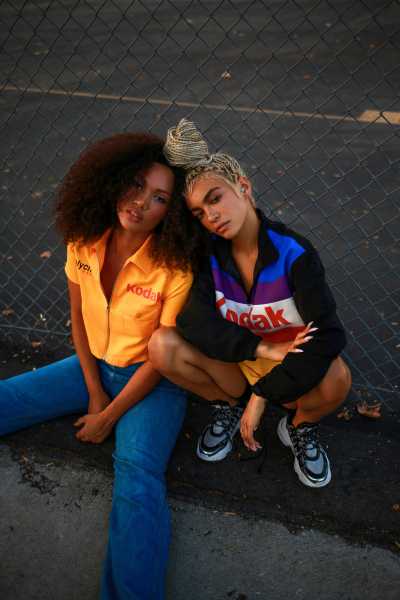
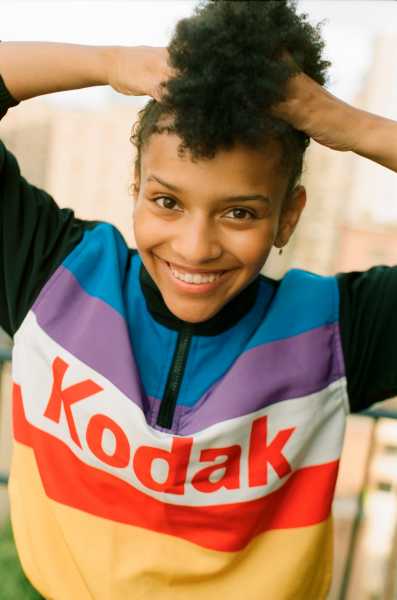
“[Fashion] took our brand to a whole new audience and positioned it as aspirational in a way that perhaps it hadn’t been before,” Atkins says. “I think there’s something about the fact that film is now premium. That enabled us to make that switch.”
Borrowing from the skateboarder-first strategy that built Supreme — a major reference point for the new Kodak — Atkins arranged a collaboration with the California skateboard collective Girl, which resulted in skateboards and clothing and skateboarding videos shot on Super 8 film.
In the last year, they’ve helped Lana Del Rey’s sister shoot a music video on Super 8, they hired hip-hop scene photographer Renell Medrano to shoot a short film with Cara Delevingne, and they invited Ansel Elgort’s brother to the Los Angeles launch party for the Forever 21 line. In January, years after they came back into style, Kodak announced its own Instax-esque instant print cameras and then got an extreme close-up shot of one into a Khalid and Ty Dolla $ign music video.
You couldn’t come up with a more on-trend series of keywords if your life depended on it.
The company is betting on the resurgence of film and analog culture
Kodak’s also benefited from the fact that big-budget Hollywood directors are eternally enamored with film, have possibly become even more so in recent years. Kodachrome, the $20 art magazine the brand launched last year with the endorsement of forever it-girl Chloe Sevigny, is made expressly to emphasize that fact. The latest cover story was on Patty Jenkins, who’s currently shooting the Wonder Woman sequel on film.
Joshua Coon, head of content marketing at Kodak and the editor of the magazine, said that their target audience is people who are interested in film not out of nostalgia but because they’re using it for the first time and valuing it as a craft.
“I don’t know if there’ll ever be a time where Blockbuster, for example, will be socially relevant again,” he says, “But a film picture to a lot of people is still worth more because it’s a more considered image. It lasts longer. Think about how many pictures we take on our phones and how many we actually go back and look at and use, versus 36 very considered shots on a film camera.”
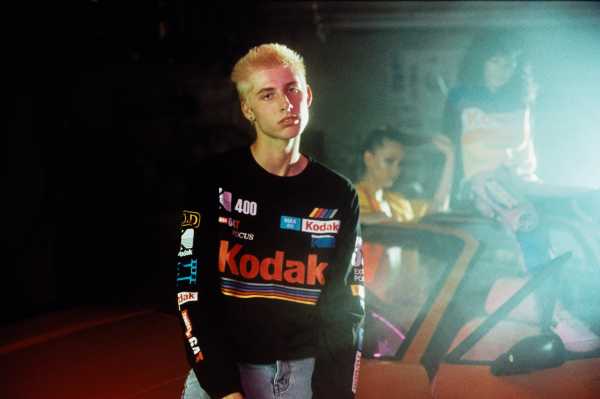
Asked why the company needs a full magazine to promote this idea, he points out that Kodak is also a printer company, which is an interesting thing to emphasize. Kodak is a printer company. Specifically, an industrial printer company. It was once a camera and film company. Film and the other consumer goods like the ones we’ve been discussing here accounted for just $47 million (flat year-over-year) of the $414 million the company brought in during Q4 of 2017, while the commercial printing division brought in $261 million.
Kodak went bankrupt because of the dedication to film these branding measures emphasize — it clung to it, adapting poorly to the rise of the digital camera, and in doing so set itself up to eventually shuck over 100,000 jobs and kneecap a city. (Three years after its collapse, Kodak’s hometown of Rochester, New York, had a median household income half that of the rest of the state.)
That partially explains why Atkins was given just six months to bring this collection to life and stresses that almost all of the marketing will happen via unpaid Instagram promotion and organic influencer relationships. She’s doing work that’s fun — and it would be nice to see Kodak bounce back into the popular culture! — but ultimately this brand work is a pet project for a lumbering tech giant still trying to figure out exactly how to keep existing.
Despite all the celebration around t-shirts selling out and J.J. Abrams talking about the magic of Super 8, Kodak was still cutting jobs and selling off entire divisions as recently as last month. It now employs about 6,000 people, down from 19,000 just before it declared bankruptcy, and 145,000 at its peak during the decade this Forever 21 project pays tribute to. As much as the analog resurgence is something Kodak is savvily leaning into, it’s also something Kodak’s just kind of been waiting around for.
The analog trend — like all trends — will come to an end. In the meantime, it’s hard to deny that this $15 Kodak x Forever 21 fanny pack is very, very on-trend.
Sourse: vox.com





